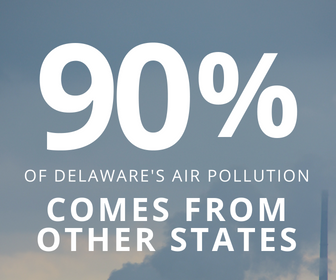Delaware drivers and businesses choose environmentally-friendly, money-saving vehicles
DOVER – DNREC’s Division of Climate, Coastal & Energy today announced that the state’s popular Clean Transportation Incentive Program will be extended through Dec. 31, 2019 in response to Delawareans’ rising demand for cleaner fuel and electric vehicles. Rebate amounts will remain the same, but eligibility requirements will be updated slightly for clarity and flexibility. Changes will take effect July 1. 
“The Clean Transportation Incentive Program has been well-received across Delaware,” said DNREC Secretary Shawn M. Garvin. “When DNREC started this program, we hoped to assist at least 100 drivers in making the cleaner, more cost-effective vehicle choice. Three years later, we have exceeded that target seven times over. Electric and cleaner fuel vehicles are a smart choice for citizens and businesses alike.”
Launched in July 2015, the Clean Transportation Incentive Program has provided rebates to more than 750 Delaware drivers across all three counties for the purchase or lease of electric and plug-in hybrid electric vehicles. The program has also provided more than 200 rebates for electric vehicle charging stations at residential and commercial properties and workplaces. The program was designed to help Delaware drivers choose vehicles that produce less or no tailpipe emissions, reducing both unhealthy pollution and the greenhouse gas emissions that drive climate change.
Rebates for the purchase or lease of cleaner fuel vehicles are:
- $3,500 for battery electric vehicles under $60,000 MSRP
- $1,500 for plug-in hybrid electric vehicles and electric vehicles with gasoline range extenders under $60,000 MSRP
- $1,000 for battery and plug-in hybrid electric vehicles over $60,000 MSRP
- $1,500 for dedicated propane or natural gas vehicles
- $1,350 for bi-fuel propane or natural gas vehicles
- $20,000 for heavy-duty dedicated natural gas trucks
Rebates are also available for electric vehicle charging stations for homes, businesses, and workplaces.
Delaware’s Clean Transportation Incentive Program is made possible through Delaware’s participation in the Regional Greenhouse Gas Initiative (RGGI). For more information, visit de.gov/cleantransportation.
Media Contact: Joanna Wilson, DNREC Public Affairs, 302-739-9902.
Vol. 48, No. 163
-30-

